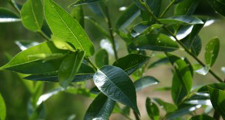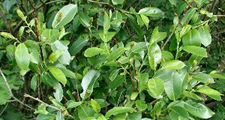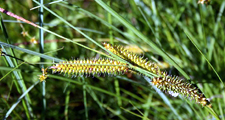Bay Willow Woodland – W3
Salix pentandra – Carex rostrata woodland.
Region
Coalfield Pennine Fringe.
Character
Single site in Durham at Causey Bank Mires associated with W5 alder woodland.
Geology
Basin mire.
Soils
Peat or peaty gleys flushed with base rich ground water.
Species
Bay Willow, Grey Willow, occasionally Eared Sallow or Downy Birch.
Ground Flora and Fauna
Diverse tall herb community: Angelica, Meadowsweet, Cuckoo flower, Bottle Sedge, Marsh-marigold, Marsh-bedstraw, Water Avens, Marsh Valerian, Marsh Thistle, Water Horsetail.
Structure
Uneven low canopy of bushy willows
Management Principles
- Timber production is not practical or desirable. Low intervention approaches are best.
- Maintain the wetness of the site – avoid changes in hydrology through on or off-site drainage.
- Exclude livestock unless grazing is long established and known to be beneficial.
- Willows regenerate well on wet ground – planting is rarely necessary.
- Maintain and increase the numbers of old trees and dead wood.
- Avoid damage from the tracking of vehicles or poaching by stock
- Maintain areas of open ground.
- When planting use cuttings or sets from local willows.
Planting Sites for New woods
Peat or peaty gleys flushed with base rich ground water. Avoid areas of existing conservation value.
Design Principles
Simple mixtures dominated by Bay and Grey Willow with smaller numbers of Birch and Eared Sallow.
Further Information
Forestry Commission Forestry Practice Guide 8: Wet Woodlands can be downloaded from Forestry Commissions Publications pages.



